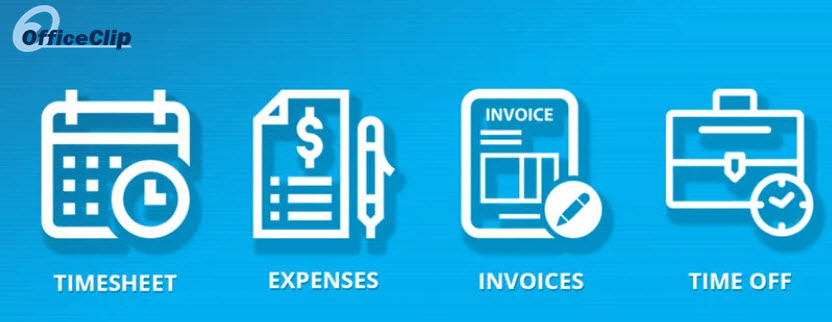What are Timesheets?
Timesheets are a tool to record and keep track of your work time. Previously, employees recorded work hours on paper-based timesheets or a spreadsheet. But with changing times, people record time using a timesheet software, which provides more data accuracy.
Timesheet software ensures that your team is paid accurately, helps you stay on budget with your projects, and automates your attendance process.

How are Timesheets used at corporate levels?
Employees:
Records time entries for the projects and tasks they have worked on a daily.
Managers/Supervisors:
Timesheet data table will give an overview of time spent on projects and help locate work and time management shortfalls. Managers are also the concerned authority to approve the timesheet after validation.
HR:
Approved Timesheets make payroll processing smooth and client billing easier.
Business Owners:
Timesheet reports help business owners to analyze project management and project costs. In addition, these reports will allow them to plan future budgets and strategies to increase sales and revenue.
What is a Timesheet used for?
- Timesheets help to measure employee performance and productivity.
- Timesheet gives a glance at all the work done by employees for a week or month. At the end of the period, if the budgeted hours for a project exceed or work is not completed, the supervisor can take corrective actions like:
- Optimize more labor for the project
- Provide training to the underperforming employees
- Delegate tasks to more efficient employees
- Timesheets give a detailed breakdown of the time spent by an employee on each project and task, making the billing process easier for different projects.
- Timesheet report analysis will help businesses make decisions about budget estimation and allocation of resources.
Timesheets for different industries:
- Freelancers: can use timesheet to track working hours for individual projects and charge their clients accordingly.
- Small Businesses: can use timesheets to track time for each project they are working on. Timesheets will help them determine work hours spent on a project, project status, and employee productivity. Tracking time using timesheets is also helpful for remote work.
- Government Departments: Consultants or organizations working under Government contracts must comply with DCAA regulations. Using timesheet will prevent fraudulent billing and ensure the filling up of timesheets daily.
- Construction Industry: Timesheet management will help the construction industry manage their projects efficiently and properly allocate resources. Also, it will help track the time of their laborers daily.
- Educational Institutions: An efficient timesheet software in the education sector will help to manage staff attendance, schedule work, and manage payroll. Besides, it can also streamline the workflow daily.
- Lawyers: can track time for each client with timesheets and bill them accordingly.
Benefits of using a Timesheet for businesses:
A timesheet helps employees stay competitive and productive and creates transparency. Following are the advantages of using a Timesheet:
-
Project management:
Timesheets help in efficient project management with the proper creation and allocation of tasks for each project. It provides a detailed overview of the project status.
Additionally, daily time tracking by employees will estimate the time taken to complete a project.
-
Automated Billing:
With a proper record of time spent on each task in the timesheets, the clients can see the actual time spent and work details and can keep track of the progress. In addition, exporting timesheets in Invoicing module will automate billing and save manual tasks of creating bills.
Timesheets will help your clients ensure accurate billing and efficient handling of projects.
-
Analysis:
Timesheet reports will summarize the problem areas in the work process. This analysis will help you in taking corrective actions.
-
Increases productivity and efficiency:
Time tracking software will encourage employees to work more seriously, as their work hours and project status are indirectly related to billing. In addition, the management will also get a glance at the job done by employees working remotely.
OfficeClip easy-to-use Timesheet features:

- Simple interface: OfficeClip Timesheet has a user-friendly and straightforward interface. Recording time is a simplified process for employees, which does not take too much time to fill up.
- Payroll period flexibility: OfficeClip Timesheet has flexible cycles where employees can submit weekly timesheets, bi-weekly, semi-monthly, or monthly timesheets. Administrators usually set the payroll period cycles.
- DCAA compliant timesheets: OfficeClip provides a timesheet with the DCAA compliance feature, which is helpful for organizations working on Government contracts. In addition, it also ensures the filling up of timesheets as per the guidelines set by the DCAA.
- Reports: OfficeClip Reporting feature can create custom reports and has many in-built reports where businesses can view all details related to projects, tasks, costs, and employees.
- Pricing: OfficeClip timesheet has a free version, and advanced features come with an affordable price for different editions.
- Integrations: Users can export timesheets in CSV format and to the ADP payroll system. Addins like Quickbooks and Sage50 Accounting software are also available.
- More features: Along with time tracking, users can also track their Expenses, track employees’ Time off, and create Invoices within OfficeClip applications.
Time tracking is vital for businesses today. Adopting the right online time tracking software will smoothen your workflow and boost revenue.
Other Recommended articles:
- 10 Best Employee Timesheet Software for 2022
- DCAA compliance requirements for Timesheet
- What are the best practices for tracking time?
- Time tracking statistics and productivity facts
Note: This blog was originally published in 2021, and has been updated.
